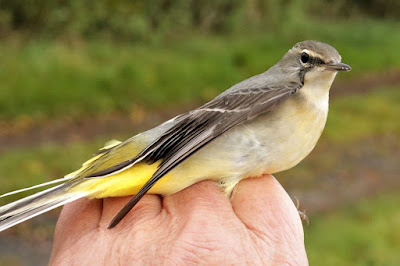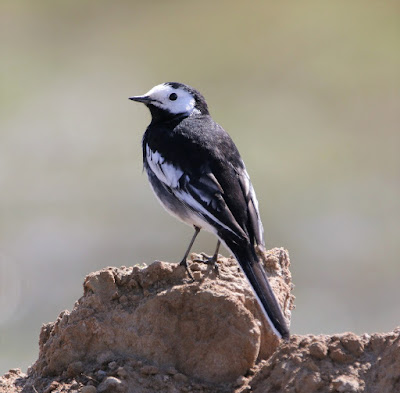Hurricane Ian dropped a number of rare birds all over Britain and Ireland but it seems that not many came to this part of Lancashire - unless anyone knows different?
After the wind and rain of last week and this Monday there appeared to be window of opportunity on Tuesday so I met up with Andy and Will for a spot of ringing.
The morning calm of 0630 hinted that thrushes in the shape of Redwings might be on the cards. But came there none, not even a Blackbird, and certainly not a Song Thrush, as rare as anything that Ian might bring.
We peered through the semi-dark and saw that a roost held seven or eight Little Egrets and bigger than the others, a single Great Egret. Before too long they all went their separate ways, croaking their good byes as they went to leave us setting mist nets alone.
Great Egret
Little Egret
A quiet session ensued with an unlucky-for-sum 13 birds caught whereby the morning flight of Linnets saved us from an even more embarrassing total - 8 Linnet, 1 Greenfinch, 1 Robin, 1 Great Tit, 1 Chaffinch and 1 Grey Wagtail.
Damn, I forgot to alter the focus point. And it’s not too often we catch a Grey Wag.
Grey Wagtail
Chaffinch
The Linnets arrived in quite small groups of 5-15 and a morning total of 100+ in the niggling and increasing breeze of 5-10 and then 15 mph, all interspersed with bouts of drizzle.
Maybe it was the cloud and mizzle with odd breaks in the grey that brought the many Skylarks pouring over from North and North East and heading relentlessly South? Most were very high, a height impossible to guesstimate other than some were in acute hearing range only and visible to 20/10 vision or better. When we packed in at a relatively early 1030 we estimated 90 and more Skylarks had passed our watch point.
Skylark
There was just the one raptor today, a single Sparrowhawk that shot across the field towards the seed crop hoping to catch something unawares. We saw Reed Buntings, Greenfinches, Chaffinches and Meadow Pipits but not in any great numbers. It just wasn’t our day.
Better luck next time. Thursday is looking a possible. Excuse me I have a phone call to make.













































.jpg)












